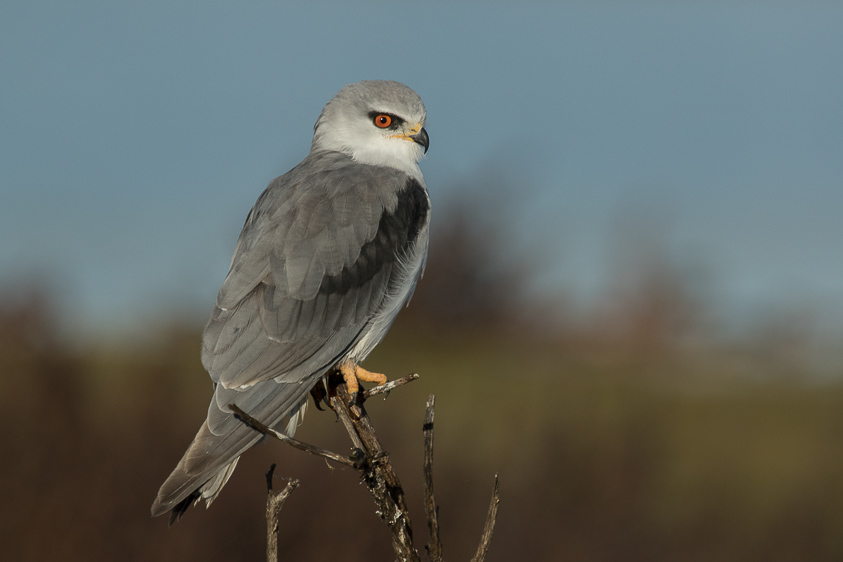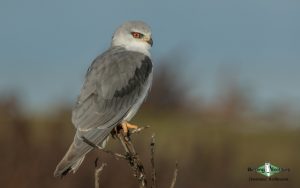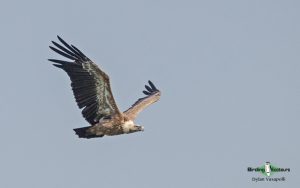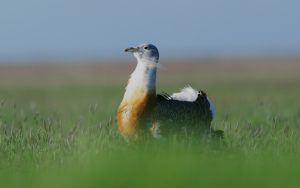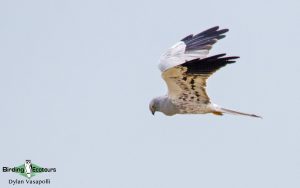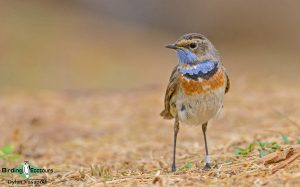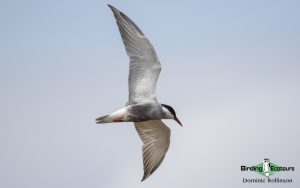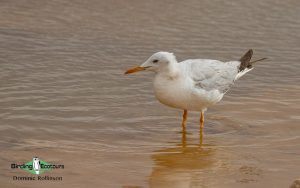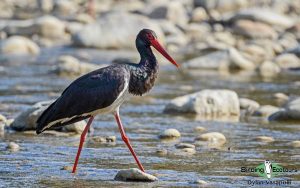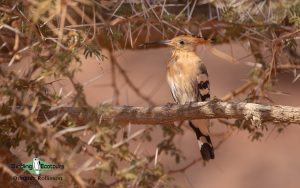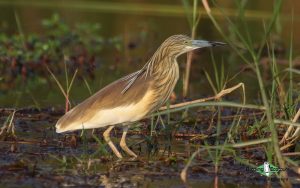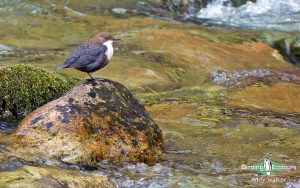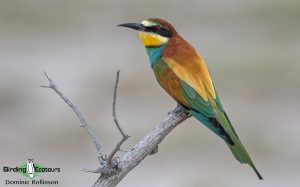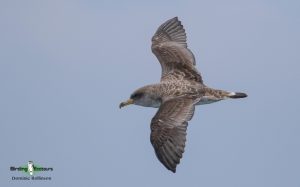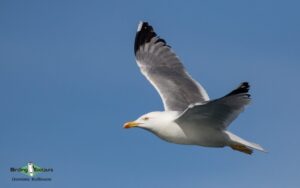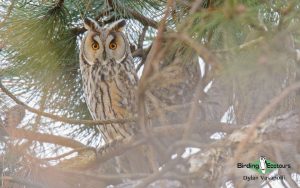Portugal Birding Tours
Our Portugal birding tours are a bit more relaxed than our typical birding tours and also enjoy some of the country’s finest vineyards and cultural highlights. The Portuguese Republic includes Continental Portugal (“Portugal” hereafter), which forms most of the western side of the Iberian Peninsula and the autonomous regions of Madeira and the Azores, two island chains in the North Atlantic Ocean. These Macaronesian islands are blessed with exciting endemic birds and globally significant rare seabirds and are a must for serious pelagic birders. Our relaxed-pace Portugal birding tours will focus on the lovely birding that is possible during the fall/autumn season.
Portugal is a medium-sized country, by European standards, with an area of 34,138 square miles (88,416 square kilometers), around the same size as the US state of Maine. Portugal’s population stands at just over 10.25 million people and is considered a country of low population density. Portugal’s sole land border is with Spain, totaling some 754 miles (1,124 kilometers) along its northern and eastern borders. The Atlantic Ocean envelops Portugal’s south and west sides and this has a major influence on the country’s climate. Portugal’s capital, Lisbon, lies on the Atlantic coast and has a population of 2.85 million people in its wider metro area. Lisbon is a tourist hotspot, cultural center, and historical epicenter which is well worth exploring after your Portugal birdwatching tour.
Portugal was originally settled by the Celts, one of the many European pre-Roman tribes. Later, the country fell under the rule of the Phoenician and Carthage Empires before becoming part of the Roman Empire in 45 BC, it would stay this way until 298 AD. In 711 AD, following the collapse of the Roman Empire, the Moors from North Africa invaded and conquered the entire Iberian Peninsula. Over the next few hundred years, a period of Reconquista by European nations saw the Moors pushed back, and in 1139 AD the Kingdom of Portugal was formed by Afonso Henriques. From the 14th century Portugal became a powerhouse of exploration and famous explorers like Vasco da Gama and Ferdinand Magellan built Portugal into a vast empire in South America, Africa, and Asia. By the 20th century this Empire had all but collapsed and in 1932 Dr. Antonio Salazar took power and he, followed by Marcelo Caetano, ruled Portugal for 42 years as effective dictators. In 1974 a military coup took power, reformed the countries democracy, and granted independence to Portugal’s remaining African colonies. Portugal was a founding member of NATO and is a member of the European Union.
Read More About Portugal
Portugal is a relatively small country so has quite a limited climatic and geographical variance, with the greatest variety coming between the lush north and more Mediterranean south. Geographically the north of the country is the most mountainous area, with the Serra de Estrela being the highest point at 1,991 meters (6,532 feet) above sea level. Portugal’s main river, the Tagus, splits the country in two, with its mouth near the city of Lisbon (the Tagus Estuary is one of the top birding destinations in Portugal). Another major river, the Douro, reaches the sea at Porto. During our Portugal birding tours we will explore both these important areas. The climate of Portugal consists of a temperate maritime climate in the north, Mediterranean climate in the center and south, and semi-arid climate in the far south. It is classed as one of Europe’s warmest countries but can also see extremes of both temperature and rainfall due to the proximity of the Atlantic Ocean. Snow does occur at higher altitudes, but this is rare (and not likely during the timing of our Portugal birding tours!).
Portugal’s far-reaching influence around the world has shaped a fascinating culture and inspired wonderful food and drink (including incredible wines) on the mainland and we will enjoy sampling some of these delights on our Portugal bird-watching tours.
According to International Ornithological Congress (IOC) taxonomy, (Version 11.1 in May 2021) Portugal (excluding Madeira and the Azores), has a bird list of 485 species, with a typically Mediterranean feel to the species occurring here. Many of the best of these species are possible on our relaxed Portugal birding tours, with regional specials including Great Bustard, Little Bustard, Black-bellied Sandgrouse, Red-knobbed Coot, Western Swamphen, Slender-billed Gull, Audouin’s Gull, Balearic Shearwater, Cory’s Shearwater, Black-winged Kite, Spanish Imperial Eagle, Iberian Green Woodpecker, Iberian Grey Shrike, Iberian Magpie, Thekla’s Lark, Mediterranean Short-toed Lark, Spectacled Warbler, and Black Wheatear. Other more widespread and Mediterranean species include the likes of Red-crested Pochard, Ferruginous Duck, Eurasian Stone-curlew, Black Stork, Eurasian Spoonbill, Little Bittern, Squacco Heron, Griffon Vulture, Cinereous Vulture, Short-toed Snake Eagle, Booted Eagle, Golden Eagle, Bonelli’s Eagle, Montagu’s Harrier, Eurasian Hoopoe, European Bee-eater, Lesser Spotted Woodpecker, Eurasian Penduline Tit, Eurasian Crag Martin, Western Subalpine Warbler, Bluethroat, Blue Rock Thrush, White-throated Dipper, Rock Sparrow, Rock Bunting, Ortolan Bunting, and so much more.
In addition to the above, the islands of Madeira and the Azores offer the visiting birder some exciting endemic terrestrial birds and seabirds, such as Trocaz Pigeon, Monteiro’s Storm Petrel, Zino’s Petrel, Desertas Petrel, Madeira Firecrest, and Azores Bullfinch. If you are interested in a birding tour to the Azores or Madeira, please do let us know, we would be happy to help.
Download Portugal Itineraries
Portugal Birding Tour: Birds, Wine & Culture November 2025/2026
Portugal Gallery
Testimonials from our Portugal birding tours
My wife and I joined three friends on our first in-depth visit to Portugal. The route included birding habitats across the country from Porto to Lisbon usually with longer stays at attractive, comfortable locations close to five wineries each providing a different tasting experience. Our guides proved knowledgeable. We felt that we were not just seeing new lifers often with close knockout views (like Water Rails, Iberian Grey Shrike, and others) sometimes dramatic concentrations of birds, like Greater Flamingo (up to 1,500), White Stork (500+), Griffon Vulture, Common Cranes, migrating raptors, etc., but also felt we were learning and contributing to their protection.
John and Judy - On PortugalWe not only saw approximately 150 species of birds (this was an October trip) but visited five wineries, and historical sites. Our hotels ranged from a Quinta to purpose built ecologically focused ones. All were beautiful, clean and comfortable. Our guides were terrific. We had our Birding Ecotours bird guide and trip leader supported by a local guide who was also a fabulous birder. Between the two we saw a lot and had a great time.
Sandra - On Portugal